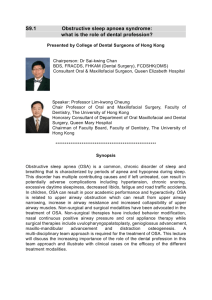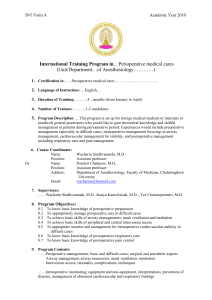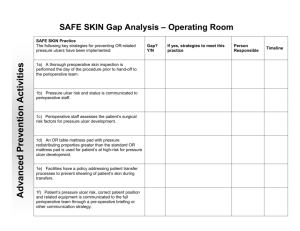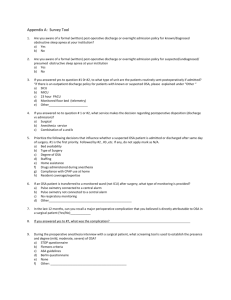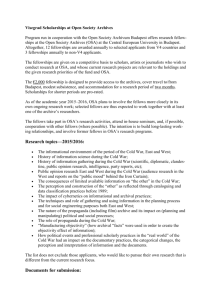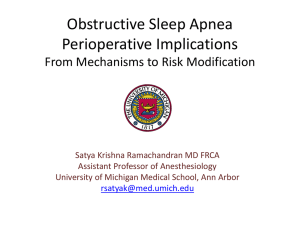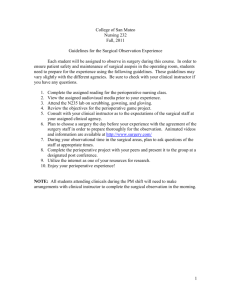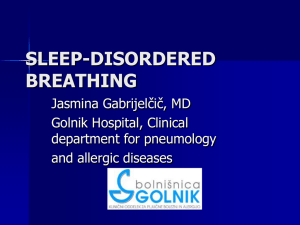Practice Guidelines for the Perioperative Management of Patients
advertisement
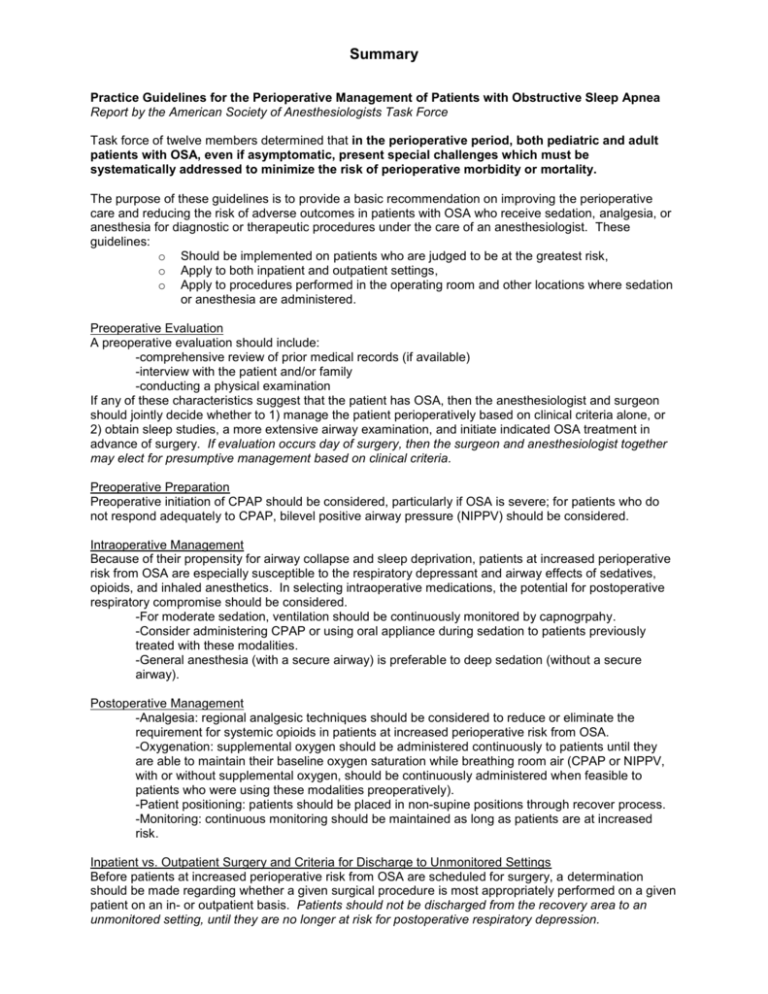
Summary Practice Guidelines for the Perioperative Management of Patients with Obstructive Sleep Apnea Report by the American Society of Anesthesiologists Task Force Task force of twelve members determined that in the perioperative period, both pediatric and adult patients with OSA, even if asymptomatic, present special challenges which must be systematically addressed to minimize the risk of perioperative morbidity or mortality. The purpose of these guidelines is to provide a basic recommendation on improving the perioperative care and reducing the risk of adverse outcomes in patients with OSA who receive sedation, analgesia, or anesthesia for diagnostic or therapeutic procedures under the care of an anesthesiologist. These guidelines: o Should be implemented on patients who are judged to be at the greatest risk, o Apply to both inpatient and outpatient settings, o Apply to procedures performed in the operating room and other locations where sedation or anesthesia are administered. Preoperative Evaluation A preoperative evaluation should include: -comprehensive review of prior medical records (if available) -interview with the patient and/or family -conducting a physical examination If any of these characteristics suggest that the patient has OSA, then the anesthesiologist and surgeon should jointly decide whether to 1) manage the patient perioperatively based on clinical criteria alone, or 2) obtain sleep studies, a more extensive airway examination, and initiate indicated OSA treatment in advance of surgery. If evaluation occurs day of surgery, then the surgeon and anesthesiologist together may elect for presumptive management based on clinical criteria. Preoperative Preparation Preoperative initiation of CPAP should be considered, particularly if OSA is severe; for patients who do not respond adequately to CPAP, bilevel positive airway pressure (NIPPV) should be considered. Intraoperative Management Because of their propensity for airway collapse and sleep deprivation, patients at increased perioperative risk from OSA are especially susceptible to the respiratory depressant and airway effects of sedatives, opioids, and inhaled anesthetics. In selecting intraoperative medications, the potential for postoperative respiratory compromise should be considered. -For moderate sedation, ventilation should be continuously monitored by capnogrpahy. -Consider administering CPAP or using oral appliance during sedation to patients previously treated with these modalities. -General anesthesia (with a secure airway) is preferable to deep sedation (without a secure airway). Postoperative Management -Analgesia: regional analgesic techniques should be considered to reduce or eliminate the requirement for systemic opioids in patients at increased perioperative risk from OSA. -Oxygenation: supplemental oxygen should be administered continuously to patients until they are able to maintain their baseline oxygen saturation while breathing room air (CPAP or NIPPV, with or without supplemental oxygen, should be continuously administered when feasible to patients who were using these modalities preoperatively). -Patient positioning: patients should be placed in non-supine positions through recover process. -Monitoring: continuous monitoring should be maintained as long as patients are at increased risk. Inpatient vs. Outpatient Surgery and Criteria for Discharge to Unmonitored Settings Before patients at increased perioperative risk from OSA are scheduled for surgery, a determination should be made regarding whether a given surgical procedure is most appropriately performed on a given patient on an in- or outpatient basis. Patients should not be discharged from the recovery area to an unmonitored setting, until they are no longer at risk for postoperative respiratory depression.
